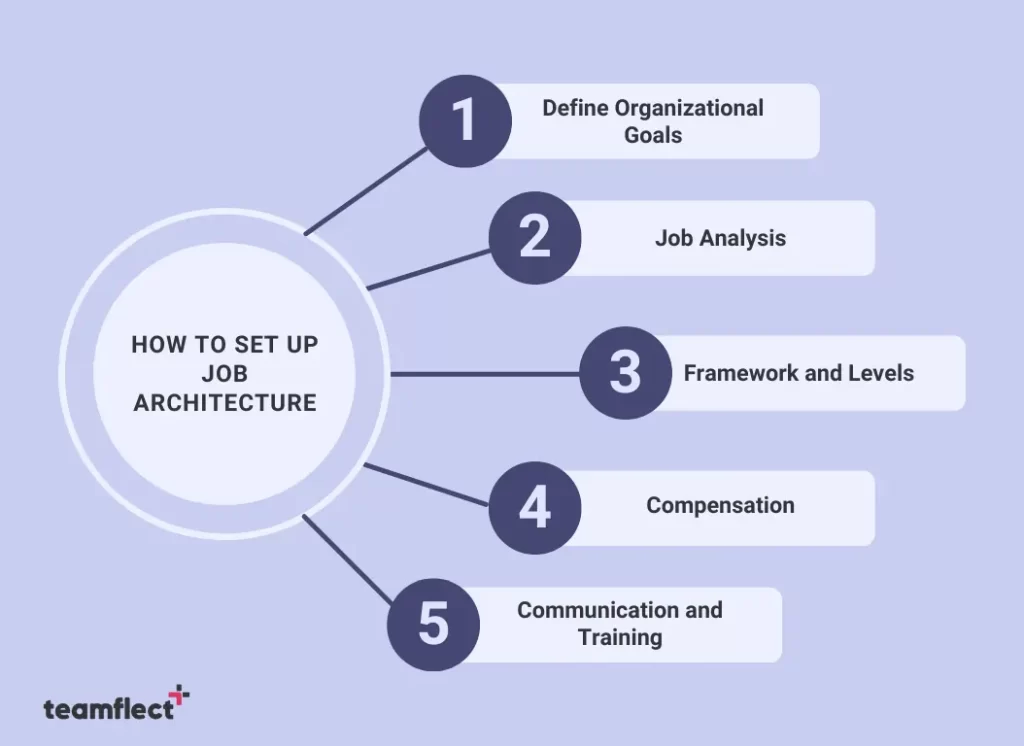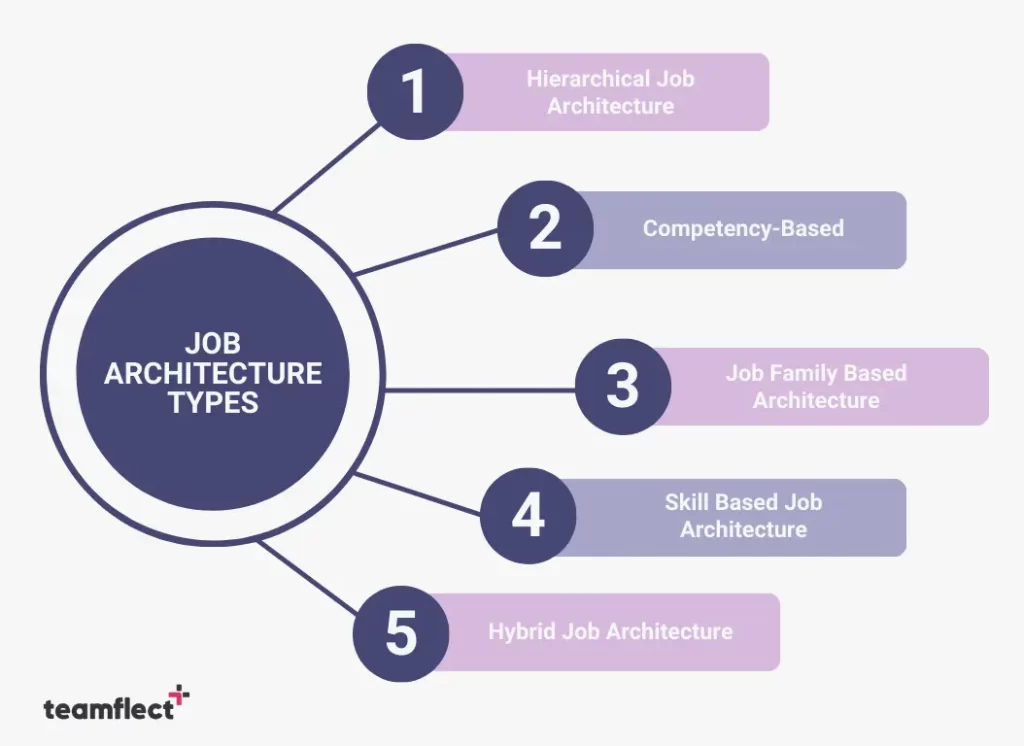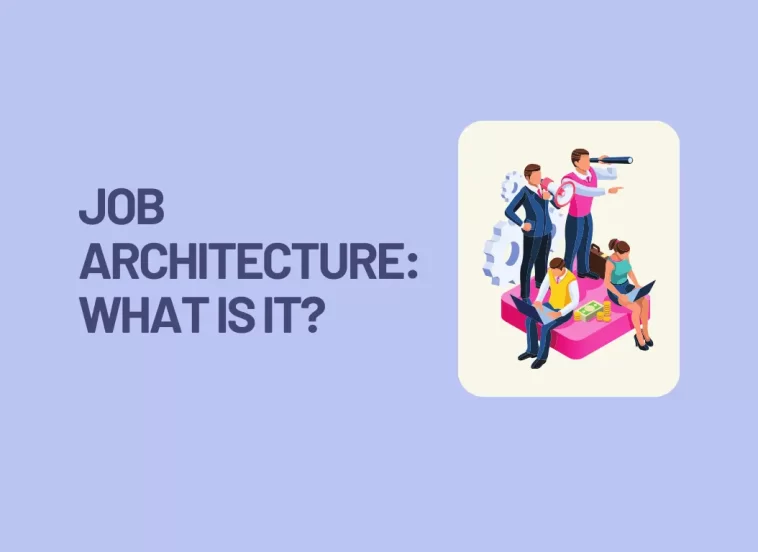Job architecture can be a very powerful tool in the dynamic work landscape. But what is it really? Simply put, you can think of job architecture as the blueprint for your organizational success. It’s a strategic framework that doesn’t just stick to the traditional way of looking at positions. Rather, it’s a forward way of approaching talent and organizational structure.
Table of Contents
What Is Job Architecture?
If you wish to create a well-oiled machine at work, a job architecture framework will be a great tool for you to use. As it embraces agile and more flexible talent management, it provides you with a unique perspective to see what other organizations are likely not able to see in your people.
Let’s dive deeper into the job architecture definition and framework together so that you can understand it better and hopefully empower your own organization in the process!
How To Set Up Job Architecture?
Here are some simple steps to follow when you’re setting up your job architecture framework;

Step 1: Define Organizational Goals
Clearly outline what you’re aiming to achieve by performing the operations you are leading in your organization. Identify which skills, roles, or competencies you need in order to reach these objectives. This is a vital step to keep you on track in your job architecture journey.
Step 2: Job Analysis
Make sure to perform a thorough job analysis of what the existing roles in your organization already are. Gather data on qualifications, skills, and responsibilities. From there make sure to highlight what needs you still have, and what patterns you’re falling into. This will clear you the path to your next steps.
Step 3: Framework and Levels
Customize a job framework that categorizes different roles based on skills, competencies, and seniority. Define the levels that work for you, which will help create a consistent structure and allow your employees to understand the part they play more clearly. This will also be to your benefit in terms of setting clear expectations and having a positive impact on employee engagement.
Step 4: Compensation
Make sure to align your structure to a well-rounded compensation structure at the same time. This will ensure fairness and help with your talent retention rates since you will create a just work environment.
Step 5: Communication and Training
Clear communication is key to creating a successful job architecture framework. The clearer you are in the changes, expectations, and process, the more likely your employees are to perform in accordance with your goals. Offer the right training and support too, providing a thorough understanding for everyone involved in this new system.
Follow these steps and you can establish a flourishing workplace that not only meets your current needs but is prepared to carry your company to its future.
Job Architecture Examples
There are several approaches that you can implement in your job architecture framework. Here are just a few:

Hierarchical Job Architecture:
This is the traditional approach that we’re already all familiar with, which embodies a clear hierarchy. It is typically arranged at all levels within an organization based on several factors such as responsibility, authority, and skill levels. As there is a very clear hierarchy in this approach, it allows for a systematic approach to the workforce and a well-defined career progression.
For Example:
- Entry level: Junior Analyst
- Intermediate Level: Analyst
- Senior Level: Senior Analyst
- Leadership Level: Team Lead or Manager
Competency-Based:
The competency-based approach focuses more so on an individual’s skills, knowledge, and abilities and assesses them with specific competencies relevant to their job or role. It emphasizes the importance of the demonstrated capabilities of the employees.
For Example:
- Analytical Skills:
Junior Analyst
Analyst
Senior Analyst
- Leadership Skills:
Team Lead
Manager
Job Family Based Architecture:
This approach involves grouping various positions within an organization that share similar functions, qualifications, or career paths into their specific job families. Job-family-based architecture approach promotes streamlined career development, consistent job evaluation, and the establishment of clear progression paths within related job families.
For Example:
- Marketing Job Family:
Marketing Coordinator
Marketing Specialist
Marketing Manager
- Finance Job Family:
Financial Analyst
Senior Financial Analyst
Finance Manager
Skill Based Job Architecture:
Rather than traditional hierarchical structures, skill-based job architecture organizes roles within an organization based on specific skills and competencies. It divides the requirements of positions in terms of skills and divides the workforce accordingly. It emphasizes a flexible and dynamic workforce, allowing employee growth and encouraging continuous learning within the organization.
For Example:
- Data Analysis:
Data Analyst I
Data Analyst II
Data Scientist
- Project Management:
Project Coordinator
Project Manager
Hybrid Job Architecture:
It is also an option to implement several of these options intertwined. For example, you could implement both a hierarchical and competency-based structure at the same time This will give you more space to create a well-rounded work environment more closely aligned with your organizational needs.
These are simply a few examples of how you can approach your job architecture framework with real titles. The important thing to remember is that you will have needs that are unique to you. So feel free to create a strategy as unique as your needs.
Free Job Architecture Template:
If you’re looking for a free template to implement, look no further! Here’s a job architecture framework template to assist you in your strategizing.
While you’re at it, try Teamflect for free as well for all your performance management needs. Teamflect provides a highly customizable and all-in-one performance management software, within Microsoft Teams. Check out Teamflect and see how easily you can implement your new job architecture framework to your new favorite performance management software!
Why Is Job Architecture Important?
Job architecture is an essential part of any organization. Without one, there won’t be a clear talent management or strategic planning that will use your resources to its best. It’s also crucial to ensure that your employees understand what is expected of them in their roles and how they contribute to company goals.
A good job architecture framework will provide effective recruitment and a better business strategy overall.
Job Architecture & Recruitment
Job architecture strategy plays a crucial role in recruitment as it will allow you to see what you need to attain your goals and an effective game plan for who else you need to get there. By having a steady job architecture you will know more about the skills, and qualifications you need to retain and gather in your company.
Furthermore, not only will it support your recruitment process but it will also help you onboard your new talents more effectively. It will offer you a standardized approach that sets clear expectations and provides the right training thoroughly enough, to ensure a smooth onboarding process.
Job Architecture & Retention
A strong job architecture significantly impacts employee retention rates simply because a well-rounded strategy on how roles are defined in your company will provide a clearer and stress-free environment for your employees.
Clearly defined roles will help your people to thrive in their positions and provide better growth opportunities in their careers which makes them more likely to stay with you. They will not only be able to perform better in their current role but also be able to understand what might be next for them within the organization.
In the end, this will create a positive effect on how your employees feel about working and putting effort into the operations of your organization. A thoughtfully curated job architecture will therefore be a powerful tool to retain valuable talent and empower your employees as well as your organization.
Job Architecture & Talent Development
A job architecture framework is vital for talent development. It serves as a way to create a supportive structure for your employees to have a clear view of where they are and where they can go if they wish to. By identifying well-defined career paths and job levels, you support your employees as you create space for them to understand their current roles as well as future growth opportunities.
As job architecture is the facilitator of targeted training and encourages progression, it becomes a solid way to ensure that employees have the direction they require in order to thrive and make meaningful contributions.
When you’re creating your job architecture structure, you will also consider talent mapping to assist you in the process. Create organizational charts, 9-boz grids, or a skill matrix with your newly defined roles to demonstrate how they will fit into your organization’s day-to-day. You can easily use Teamflect to implement all your job architecture structural decisions to your work environment seamlessly!



